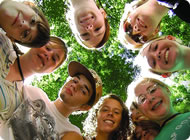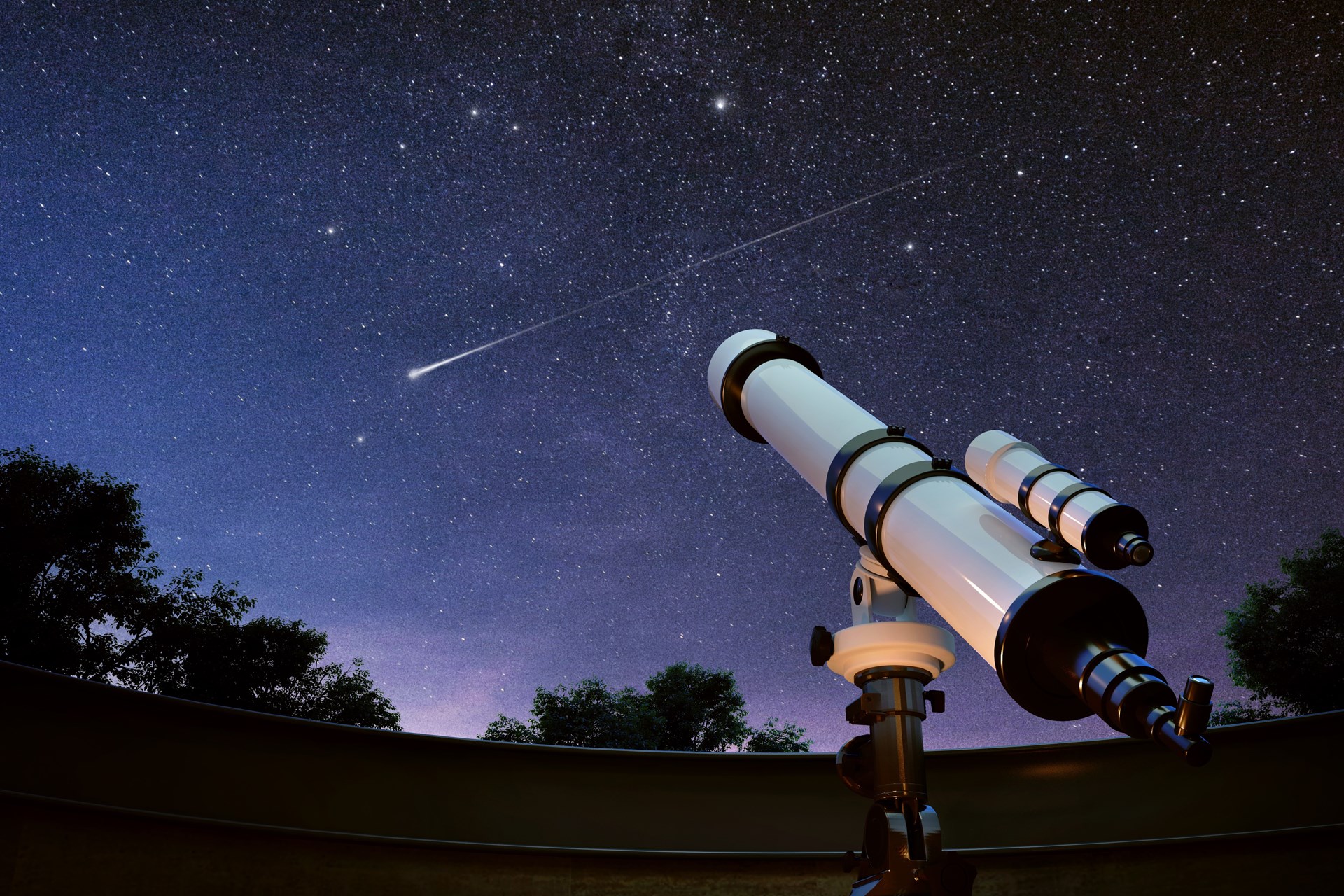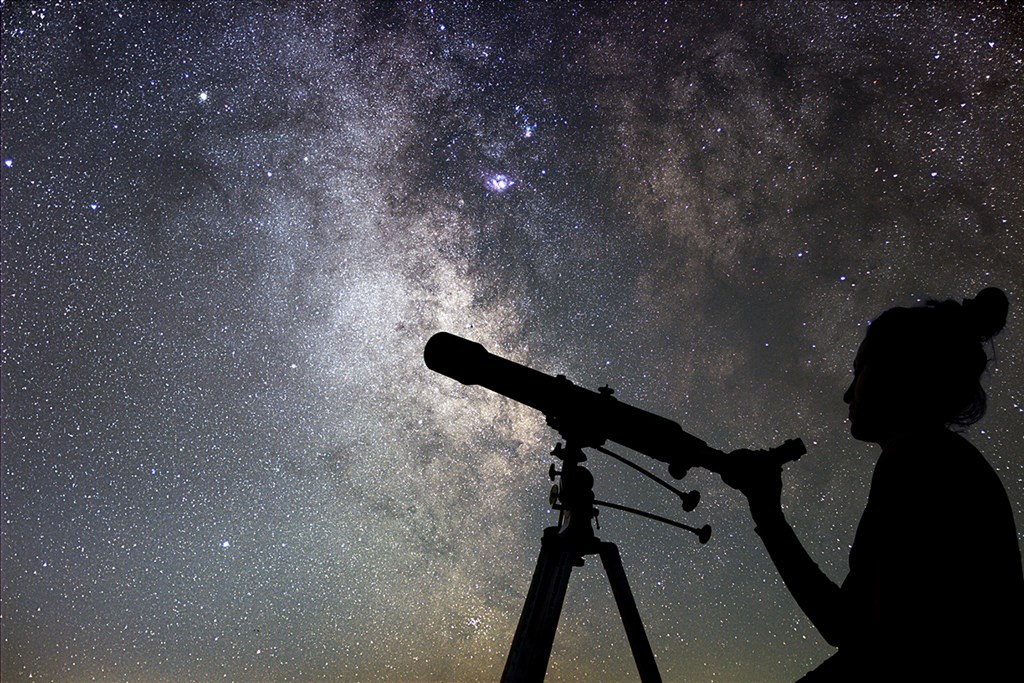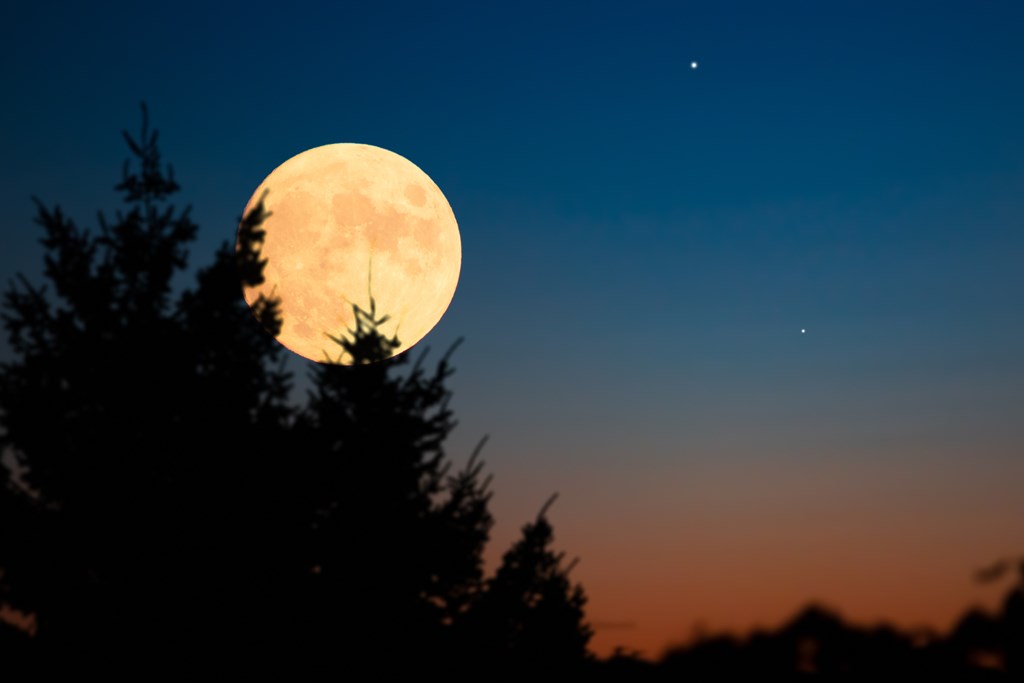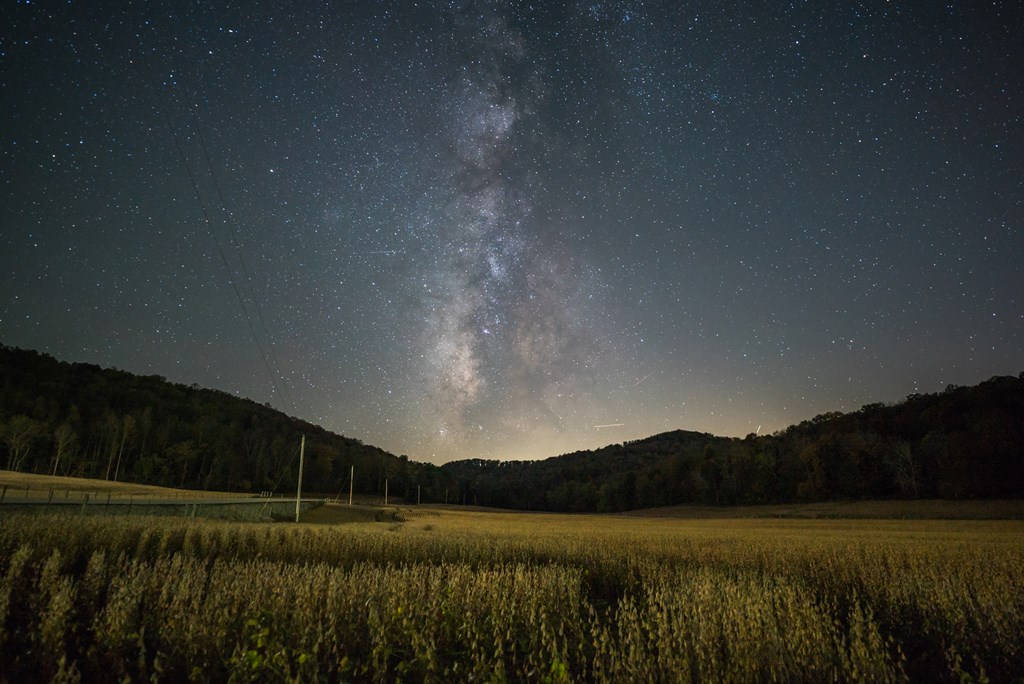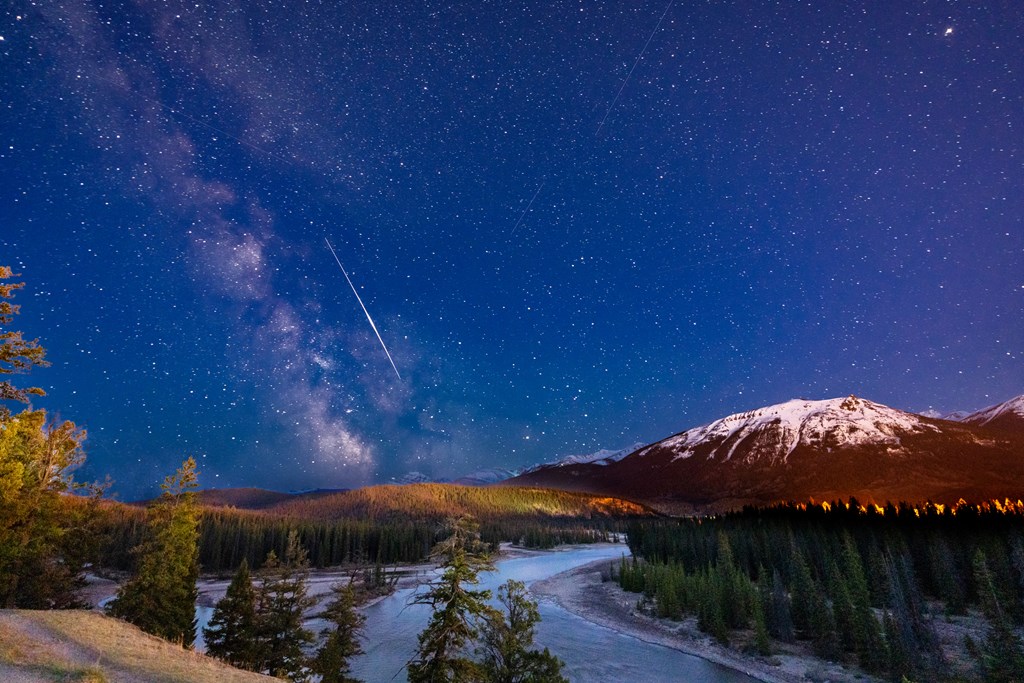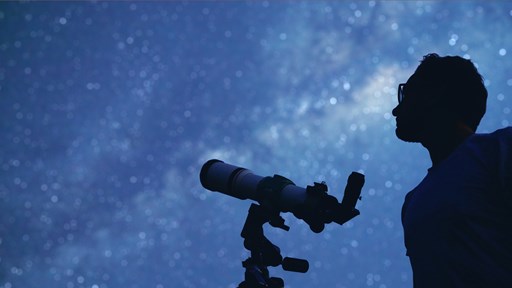As more travelers seek unique and immersive experiences, “noctourism,” or the art of exploring the world after dark, has emerged as one of 2025’s biggest travel trends. From moonlit hikes to bioluminescent beaches and, of course, dazzling night skies, adventurers are embracing the magic of the evening hours like never before.
Whether you’re a seasoned astronomer or just love the idea of gazing up at the Milky Way while you camp, 2025 is shaping up to be a great year for stargazing. From meteor showers to planetary alignments, there are plenty of cosmic events you won’t want to miss. We’ve rounded up the best celestial events of the year. So grab your telescope, pack your sense of wonder, and get ready for an unforgettable journey through the night sky!
Here Are the Astronomical Events You Need to See in 2025 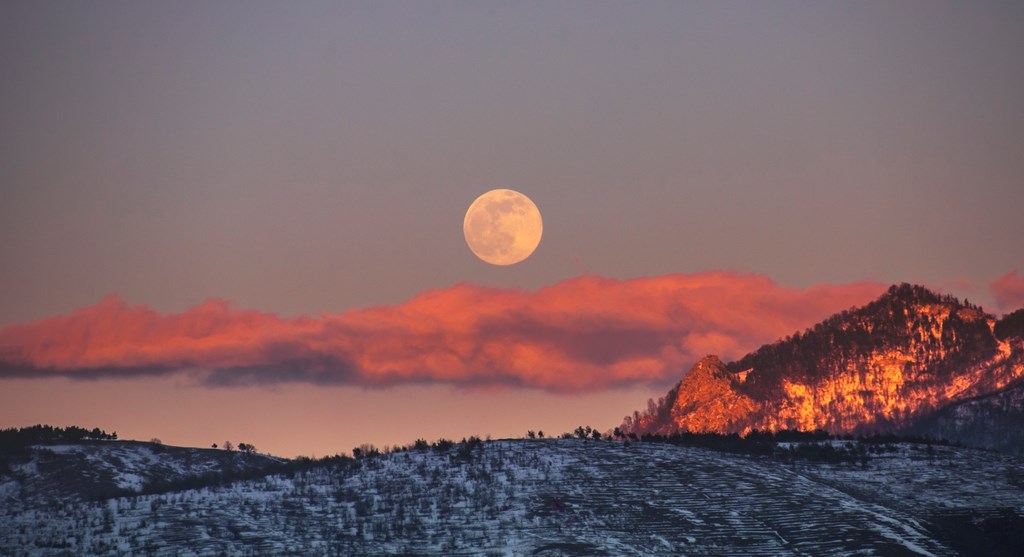
JANUARY
January 2–3 | Quadrantid Meteor Shower
The Quadrantid meteor shower is caused by debris from the asteroid 2003 EH1, likely an extinct comet that has evaporated its ice and other volatiles. The Quadrantids, which the International Meteor Organization says is one of the strongest meteor showers this year, are also one of the few caused by debris from an asteroid. This meteor shower showcases up to 80 meteors per hour during its short peak, which lasts only around six hours. The best viewing is after midnight in the Northern Hemisphere.
January 10 | Optimal Viewing Time for Venus
Venus reaches its greatest eastern elongation, meaning the planet appears farthest from the sun in the evening sky after sunset. This makes it one of the best times to see the planet in 2025.
January 13 | Full Wolf Moon
Deemed the Wolf Moon because wolves howl more frequently during the cold, snowy winter, the Wolf Moon is the first full moon of the year that lights up the night sky. While it may make constellations harder to see, it’s perfect for nighttime hikes.
January 29 | New Moon
The new moon in Aquarius is often referred to as a time to pursue new goals, projects, and ideas. With the moon completely dark, and darkening our night skies just a few weeks after the Wolf Moon dazzled the cosmos with its bright glow, this is the best night for stargazing. This new moon will be 0.07% illuminated.
FEBRUARY
February 12 | Full Snow Moon
Named for the cold, wintery weather that accompanies February, this bright full moon may overshadow some constellations, but it’s perfect for taking in the beautiful winter landscape.
February 27 | New Moon
With no moonlight to interfere, this is an ideal night to stargaze and take in the deep sky. This new moon will have 0% illumination.
MARCH
March 8 | Optimal Viewing Time for Mercury
Mercury will be at its greatest eastern elongation, making this one of the best opportunities of the year to spot the elusive planet. Look low in the sky just after sunset for your chance to catch a glimpse!
March 13 | Full Worm Moon
March’s full moon, known as the Worm Moon, is named for the warming soil and new life that March brings – including earthworms. This occurs when Earth sits directly between the sun and the moon, fully illuminating it.
March 14 | Total Lunar Eclipse
A total lunar eclipse happens when Earth completely blocks the sun’s rays from reaching the moon, casting a reddish glow known as a blood moon. This rare sight will be visible across the U.S. and Canada for 65 minutes—perfect for a night of celestial wonder at the campground!
March 20 | March Equinox
During the March equinox, the Earth is perpendicular to the sun, with the sun shining in a straight line toward the equator. Marking the official change of seasons, the March equinox brings the first day of spring in the Northern Hemisphere and the first day of fall in the Southern Hemisphere. No matter where you are, this will be a great time to embrace the outdoors!
March 29 | New Moon
The new moon signals the start of the lunar cycle, when the moon is completely dark. With no moonlight in the sky, it’s the perfect opportunity to escape to a campground and witness the brilliance of the Milky Way and constellations in all their glory. This new moon will also have an illumination of 0%.
APRIL
April 12 | Full Pink Moon
Venture outside to catch a glimpse of April’s full Pink Moon, which sits between the sun and the moon, making it appear fully illuminated. It’s also a micromoon, which is essentially the opposite of a “Supermoon.” It signifies that the full Moon is at its farthest point from Earth instead of the nearest point). In astronomical terms, it’s called “apogee.” While the bright glow can make stargazing more challenging, it’s the perfect time for a great noctourism hike and to make memories with the family.
April 21 | Another Optimal Viewing Time for Mercury
Look low in the sky just before sunrise for a glimpse of this small but mighty world. For this event, Mercury reaches its greatest western elongation, meaning Mercury appears in the morning sky as a “morning star” before the Sun. This offers one of the best chances of the year to spot the planet.
April 22–23 | Lyrid Meteor Shower
The Lyrids may only produce about 20 meteors (or shooting stars) per hour, but they are known for their bright, long-lasting dust trails that linger in the Northern Hemisphere’s night sky. Head to a dark-sky location after midnight and keep your eyes peeled for shooting stars.
April 27 | New Moon
With the moon completely dark, April’s new moon creates the perfect conditions for stargazing and Milky Way spotting. New Moons are often associated with new beginnings, so escape to the campground for a night of introspection under the clearest skies of the month!
MAY
May 5–6 | Eta Aquarid Meteor Shower
Notably deemed one of the year’s best meteor showers, the Eta Aquarids can produce up to 50 meteors per hour in the predawn hours. These bright shooting stars come from dust left behind by Halley’s Comet and are especially spectacular in the Southern Hemisphere, but are also visible in the North Hemisphere —a perfect reason to plan an early morning stargazing adventure.
May 12 | Full Flower Moon
Known as a good time to manifest dreams, May’s Flower Moon shines brightly as Earth moves between the sun and the moon. This moon’s nickname comes from the growing abundance of flowers in the late spring. While the extra moonlight can make stargazing trickier, it’s certainly still worth spending an evening under the night sky and soaking up the fresh spring weather. Other names for the Flower Moon include “Milk Moon,” “Frog Moon,” “Planting Moon” and “uNhlaba.”
May 26 | New Moon
With no moonlight in the sky, the new moon, otherwise known as a Waxing Gibbous phase, creates the darkest night of the month—perfect for spotting constellations, planets, and the Milky Way. The phase lasts nearly 7 days with the moon becoming more illuminated each day until the Full Moon. Set up camp in a dark-sky location for unbeatable nighttime views.
May 31 | Optimal Viewing Time for Venus
Venus reaches its greatest western elongation, making it one of the best times of the year to observe the dazzling planet. Look to the eastern sky just before sunrise to catch a brilliant view of the “morning star.” Fun fact: 2025 is also known as “the year of Venus.”
JUNE
June 11 | Full Strawberry Moon
June’s Strawberry Moon rises as Earth moves between the sun and the moon, casting a brilliant glow over the night sky. This moon is named for strawberry season reaching its peak!
June 21 | June Solstice
The longest day of the year in the Northern Hemisphere and the official start of summer, the June Solstice marks when the North Pole tilts closest to the sun and prompts celebration for many people in the world. In the Southern Hemisphere, it’s the shortest day of the year and the beginning of winter. This event happens when the Earth’s axis is tilted 23 degrees and 27 minutes relative to its orbit around the sun. Whether you’re soaking up extra daylight or welcoming cooler nights, it’s a great time for an outdoor escape.
June 25 | New Moon
With the moon completely dark, June’s new moon provides the best conditions for stargazing and Milky Way viewing. Pack up the tent and head to a dark-sky campground for an unforgettable night under the stars. Fun fact: The moon cannot emit its own light, and it can only reflect the light from the rays of the sun. Since there is no sunlight during the New Moon phase, there’s nothing to reflect, so the moon becomes completely dark and unable to be seen in the sky.
JULY
July 4 | Another Optimal Viewing Time for Mercury
Mercury reaches its greatest eastern elongation once again, making this one of the best chances all year to see the tiny grey planet. Look low on the horizon just after sunset for a glimpse of this world.
July 10 | Full Buck Moon
Named after the time when male deer grow new antlers, July’s Buck Moon fills the sky with its bright glow.
July 24 | New Moon
The darkest sky of the month means prime stargazing conditions. Whether you’re out for a summer road trip or setting up camp in a remote spot, this is the best time to see constellations and catch a glimpse of the Milky Way. You can also celebrate the new moon by using it as a time to redefine your intentions. Light a candle, do a little meditation, visualize your goals for the future, and if you like rituals, engage in intention lists and other cleanings.
July 28–29 | Delta Aquarid Meteor Shower
The Delta Aquarids may be a modest meteor shower, but with the moon setting early, the late-night sky will be extra dark—a great reason to head to a dark-sky location and try to spot shooting stars. The best time to watch is after midnight for peak visibility.
AUGUST
August 9 | Full Sturgeon Moon
August’s Sturgeon Moon lights up the night sky in August. Named for North America’s largest freshwater fish, the white sturgeon, the full moon makes it harder to spot constellations but it’s perfect for those warm, late-summer camping trips.
August 12–13 | Perseid Meteor Shower
One of the Northern Hemisphere’s best meteor showers, the Perseids can produce up to 100 meteors per hour at peak times! The Perseid meteor shower usually peaks on August 12 or 13, when Earth passes through the densest part of debris left behind by Comet Swift-Tuttle. While the bright moon may dim the display, patient stargazers should wait until after midnight for the best views.
August 19 | Another Optimal Viewing Time for Mercury
Once again, Mercury reaches its greatest western elongation. Look low on the horizon before sunrise for a glimpse of this grey planet.
August 22 | New Moon
The darkest night of the month again means prime stargazing and Milky Way spotting. Head to a dark-sky KOA campground for an epic night under the stars.
SEPTEMBER
September 7 | Full Harvest Moon
The Harvest Moon, the full moon closest to the autumn equinox, rises bright and full. While it may wash out faint stars, it’s a classic signal of the changing seasons—perfect for fall camping adventures. It’s called the Harvest Moon because it occurs when the harvest season begins before winter. It’s a time to celebrate the summer and prepare for the winter.
September 7 | Total Lunar Eclipse (Blood Moon)
A total lunar eclipse occurs when Earth completely blocks the sun’s light from reaching the moon, creating a deep red “blood moon” effect. It’s the longest total lunar eclipse since 2022—and will be visible from Australia, Asia, Africa, and Europe!
September 21 | New Moon
With no moonlight to interfere, this new moon offers the perfect conditions for stargazing and Milky Way viewing. The Waning Gibbous on September 21 has an illumination of 82%. This translates as the percentage of the Moon illuminated by the Sun.
September 21 | Optimal Time to View Saturn
Saturn reaches opposition, meaning it’s at its closest and brightest all year! You’ll spot it as a yellowish dot with the naked eye. Even though you won’t be able to see Saturn’s rings through binoculars, it’ll appear through binoculars as a bright oval-shaped disk. But even a small backyard telescope will show the rings.
September 22 | September Equinox
The first day of fall in the Northern Hemisphere and the first day of spring in the Southern Hemisphere, the equinox marks the shift in seasons. At the equinox, Earth’s axis is perpendicular to the Sun’s rays as the Sun is directly above the equator. Whether you’re celebrating cooler autumn nights or longer spring days, it’s a great time to be outside.
OCTOBER
October 7 | Full Hunter’s Moon
The Hunter’s Moon follows the Harvest Moon, traditionally signaling a time to prepare for winter. It’s called the Hunter’s Moon because it occurs when hunters would traditionally start preparing for winter.
October 21–22 | Orionid Meteor Shower
The Orionids come from Halley’s Comet and are known for their fast, bright meteors. With a waning moon, this could be a great show—watch between midnight and dawn for the best chance to see these streaking fireballs. The best viewing conditions are when the moon is not interfering.
October 22 | New Moon
A moonless sky means ideal conditions for stargazing and Milky Way viewing. It’s a perfect excuse for a fall camping getaway. For this new moon, the Waning Gibbous has an illumination of 67%.
October 28 | Jupiter at Opposition
Jupiter reaches opposition, meaning it will be directly opposite the Sun in the sky as viewed from Earth. This makes it brighter and closer to Earth than at any other time this year. You’ll see it shining all night—a telescope will reveal its bands and moons!
NOVEMBER
November 6 | Full Beaver Moon
Named after the time when beavers prepare for winter, November’s full moon lights up crisp autumn nights—a great time for late-fall camping under golden leaves.
November 21 | New Moon
The darkest night of the month means perfect conditions for stargazing. Bundle up and head to a dark-sky site to see the stars at their brightest. The moon will be 70.69% illuminated.
November 17–18 | Leonid Meteor Shower
The Leonids are famous for fast, bright meteors that sometimes produce fireballs. Named after the constellation Leo, where the meteors appear to originate, this year’s shower coincides with a waning moon, so conditions should be decent after midnight.
DECEMBER
December 4 | Full Cold Moon
December’s Cold Moon brightens the longest nights of the year, making for beautiful winter landscapes. The Cold Moon’s name reflects the cold temperatures of December, and it will be the third supermoon of the year, meaning it will be slightly closer and brighter to Earth than usual.
December 13–14 | Geminid Meteor Shower
Named after the constellation Gemini, the Geminids are one of the best meteor showers of the year, producing up to 120 meteors per hour at their peak. Bundle up for this stunning celestial show!
December 21 | New Moon & Winter Solstice
The longest night of the year pairs perfectly with a new moon, creating the darkest skies for stargazing. The full moon in December is called the Cold Moon, the Long Night Moon, the Frost Moon, as an ode to winter. Whether you’re celebrating the start of winter or enjoying summer in the Southern Hemisphere, it’s a great night to look up.
December 22 | Ursid Meteor Shower
A small but charming meteor shower, and named after the constellation Ursa Minor, the Ursids peak around winter solstice, bringing 10–15 meteors per hour. The meteors come from the debris of comet 8P/Tuttle, which burns up as it enters Earth’s atmosphere. With a dark sky from the new moon, it’s worth heading out to catch a few winter shooting stars.
Tips for the Best Stargazing Experience
- Check the Moon Phase – A full moon can brighten the sky and make it harder to see stars. Plan your stargazing on a new moon for the best visibility.
- Use a Stargazing App – Apps like Star Walk or SkyView help identify constellations, planets, and deep-space objects right from your phone.
- Let Your Eyes Adjust – It takes about 20–30 minutes for your eyes to fully adjust to the dark. Try using a red flashlight instead of a regular one to preserve your night vision.
- Bring a Blanket or Sleeping Bag – Even in the summer, nights can get chilly. Lay back, get cozy, and take in the vastness of the universe.
- Attend a KOA Stargazing Event – Some KOA locations host astronomy nights, where experts guide you through the constellations and share fun space facts.
Make KOA Your Stargazing Destination
Whether you’re planning a road trip to chase the Milky Way or just want a peaceful night under the stars, KOA offers the perfect setting for your next adventure. With over 500 locations across North America, there’s always a KOA near a stunning night sky waiting to be explored.
Ready to plan your stargazing getaway? Find your perfect KOA and book your site today!
 Lindsey Hall is an award-winning mental health speaker and writer, focusing on what she refers to as “the nitty gritty topics not discussed.” She is the author behind “I Haven’t Shaved in Six Weeks,” a blog written to humanize the stigmas of eating disorders and treatment.
Lindsey Hall is an award-winning mental health speaker and writer, focusing on what she refers to as “the nitty gritty topics not discussed.” She is the author behind “I Haven’t Shaved in Six Weeks,” a blog written to humanize the stigmas of eating disorders and treatment.
Through her published writing and work in public relations, she has had the privilege of speaking around the world on nuanced topics such as Body Dysmorphic Disorder, Exercise Addiction, Orthorexia and other eating disorder behaviors, and has been featured in publications including TODAY Show, CBS, Washington Post, Cosmopolitan, Women’s Health, SheKnows, SHAPE Magazine, Refinery29, and more.
An outdoor enthusiast (and Colorado girl) at heart, Lindsey loves to hike wherever possible and is currently focused on taking her white Dodge Ram ProMaster van around the world with her lovely cat, Smudges. Together, they have traveled in over 40 states and even across borders into Canada to conquer the trails!
Follow Lindsey Hall on Instagram.








